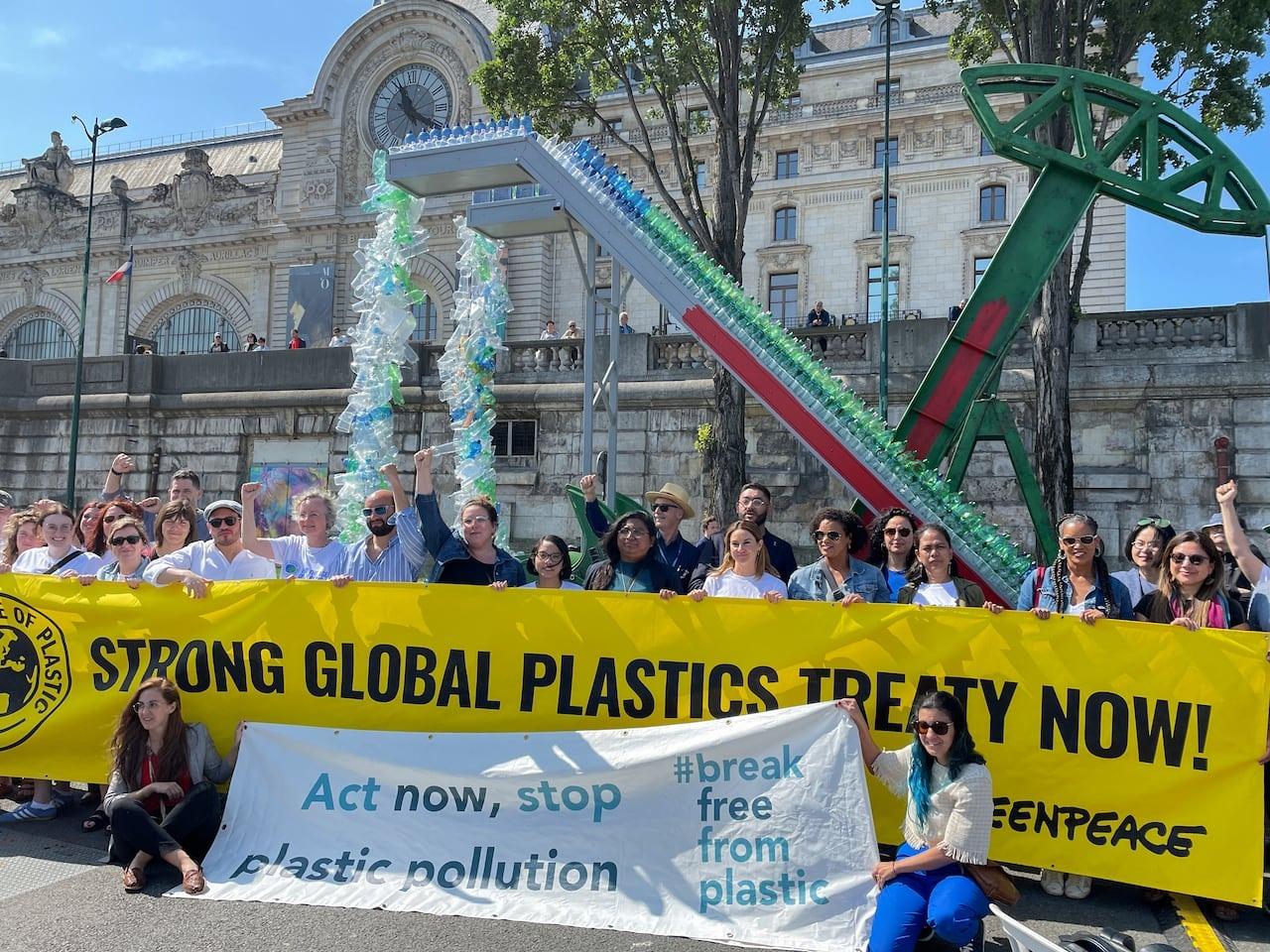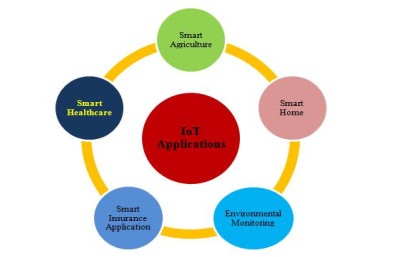Report on Airborne Microplastic Contamination in Geneva and Implications for Sustainable Development Goals
Introduction and Context
A recent investigation conducted by Greenpeace International in Geneva, Switzerland, has confirmed the presence of airborne microplastics in both outdoor and indoor urban environments. The findings, released during the second week of negotiations for a Global Plastics Treaty, underscore the pervasive nature of plastic pollution and its direct conflict with the achievement of multiple Sustainable Development Goals (SDGs). The study reveals that even in a city within a nation ranked highly for waste management, plastic pollution is uncontainable, posing significant risks to human health and the environment.
Key Findings of the Investigation
Air samples were collected over an eight-hour period across various urban locations, including offices, public transport, and retail spaces. The analysis yielded the following results:
- A total of 165 particles were identified through high-magnification and infrared spectroscopy.
- The particles were categorized as:
- 94 fragments, with many measuring under 20 microns and thus invisible to the naked eye.
- 71 fibres, predominantly composed of cellulose or modified natural materials.
- Of the total particles, 12 were confirmed as microplastics (6 fibres and 6 fragments), with an additional 3 tentatively identified as synthetic polymers.
- Confirmed microplastic materials included polyester, nylon, polyethylene, vinyl copolymers, and cellulose acetate, which are commonly found in clothing, packaging, and furnishings.
It is critical to note that the analysis was limited to particles larger than 10 microns. Scientific literature suggests that smaller nanoparticles (1–10 µm), which can penetrate deeper into the lungs, are likely present in much greater quantities.
Alignment with Sustainable Development Goals (SDGs)
The proliferation of airborne microplastics directly undermines progress towards several key SDGs. The crisis necessitates a systemic response that aligns with the principles of the 2030 Agenda for Sustainable Development.
-
SDG 3: Good Health and Well-being
The inhalation of microplastic particles presents a direct threat to human health. The presence of particles small enough to enter the pulmonary system raises significant public health concerns, challenging the core objective of ensuring healthy lives and promoting well-being for all at all ages.
-
SDG 12: Responsible Consumption and Production
This goal is central to the plastic pollution crisis. The report highlights that the root cause is unsustainable production, with projections indicating a potential tripling of plastic output by 2060. The findings demonstrate that even the most effective downstream waste management systems are insufficient. Achieving SDG 12 requires a fundamental shift away from a linear model of production and consumption, particularly concerning short-lived products like single-use packaging and fast fashion.
-
SDG 11: Sustainable Cities and Communities
The detection of microplastics in Geneva’s air illustrates the failure to create fully safe and sustainable urban environments. Air quality is a critical component of a sustainable city, and this form of pollution compromises the health and quality of life for urban populations.
-
SDG 14 (Life Below Water) and SDG 15 (Life on Land)
Airborne microplastics do not remain in the atmosphere indefinitely. They settle and contaminate terrestrial and aquatic ecosystems, contributing to the widespread plastic pollution that harms biodiversity and disrupts ecological functions on land and in water.
-
SDG 13: Climate Action
Plastic production is intrinsically linked to the fossil fuel industry. The continued expansion of plastic manufacturing exacerbates climate change by increasing demand for fossil fuels and contributing to greenhouse gas emissions throughout the plastic lifecycle.
Policy Recommendations and Conclusion
The evidence strongly suggests that downstream solutions such as recycling and waste management are inadequate to address the scale of the microplastic crisis. To align with the Sustainable Development Goals, a preventative, upstream approach is necessary. The primary recommendation is the establishment of a robust and legally binding Global Plastics Treaty that focuses on source reduction.
- The treaty must include an ambitious and legally binding target to cut total plastic production by a minimum of 75% by 2040.
- This reduction is essential to protect planetary health, ensure human well-being, and create truly sustainable systems of production and consumption as envisioned by the SDGs.
In conclusion, the presence of microplastics in the air is a clear indicator of a systemic failure that requires immediate and courageous political action. A strong Global Plastics Treaty that cuts production at the source is imperative to mitigate this escalating environmental and public health threat.
SDGs Addressed in the Article
SDG 3: Good Health and Well-being
- The article directly connects airborne microplastics to human health risks. It states that small particles can “penetrate deep into the lungs, raising serious health concerns” and that lobbyists are “giving themselves potential health issues.” The call to action is framed as a matter of “public health.”
SDG 11: Sustainable Cities and Communities
- The investigation focuses on an urban environment, Geneva, sampling air in “cafés, public transport, and shops.” The article highlights the issue of urban air quality, stating that “Geneva’s air contains microplastic pollution,” making it a problem for city dwellers.
SDG 12: Responsible Consumption and Production
- This is a central theme. The article critiques the “massive expansion in plastic production” and advocates for a solution that “cuts plastic production at the source.” It explicitly links the problem to consumption patterns like “single-use packaging and fast fashion” and the failure of current waste management systems.
Specific SDG Targets Identified
SDG 3: Good Health and Well-being
- Target 3.9: By 2030, substantially reduce the number of deaths and illnesses from hazardous chemicals and air, water and soil pollution and contamination. The article’s focus on airborne microplastics as a form of “air pollution” that causes “serious health concerns” directly aligns with this target.
SDG 11: Sustainable Cities and Communities
- Target 11.6: By 2030, reduce the adverse per capita environmental impact of cities, including by paying special attention to air quality and municipal and other waste management. The article’s investigation into Geneva’s air quality and its conclusion that even “the best waste management systems” are failing directly address this target.
SDG 12: Responsible Consumption and Production
- Target 12.4: By 2020, achieve the environmentally sound management of chemicals and all wastes throughout their life cycle… and significantly reduce their release to air, water and soil. The presence of microplastics in the air is a clear example of the failure to prevent the release of plastic waste into the environment.
- Target 12.5: By 2030, substantially reduce waste generation through prevention, reduction, recycling and reuse. Greenpeace’s primary demand to “cut plastic production by at least 75% by 2040” is a direct call for waste prevention and reduction at the source, which is the core of this target.
Indicators for Measuring Progress
SDG 3: Good Health and Well-being
- Implied Indicator (related to 3.9.1): The article implies the need to measure health impacts from airborne pollutants. While it doesn’t provide mortality data, the entire investigation is premised on measuring the presence of a harmful substance in the air to prevent adverse health outcomes, which is the purpose of Indicator 3.9.1 (Mortality rate attributed to household and ambient air pollution).
SDG 11: Sustainable Cities and Communities
- Indicator 11.6.2: Annual mean levels of fine particulate matter (e.g. PM2.5 and PM10) in cities. The investigation’s methodology directly relates to this indicator. It measured the number and size of airborne particles (“94 fragments, many under 20 microns,” “71 fibres”) in a specific volume of urban air (1.7 m³), which is a method for assessing particulate matter pollution.
SDG 12: Responsible Consumption and Production
- Implied Indicator (for Target 12.4): The concentration of microplastic particles in the air (e.g., particles per cubic meter) serves as a direct indicator of the release of plastic pollution into the environment. The finding of “165 total particles” in a 1.7 m³ sample is a measurement of this indicator.
- Implied Indicator (for Target 12.5): The rate of plastic production. The article uses this as a key metric, citing the OECD’s data on a “baseline of 428 MT in 2019” and a projected tripling by 2060. Greenpeace’s proposed goal to “cut plastic production by at least 75% by 2040” uses this same metric to measure progress.
Summary Table of SDGs, Targets, and Indicators
| SDGs | Targets | Indicators |
|---|---|---|
| SDG 3: Good Health and Well-being | 3.9: Reduce deaths and illnesses from hazardous chemicals and pollution. | Implied: Health impacts resulting from exposure to airborne microplastics, relating to Indicator 3.9.1 (Mortality rate attributed to ambient air pollution). |
| SDG 11: Sustainable Cities and Communities | 11.6: Reduce the environmental impact of cities, focusing on air quality and waste management. | Directly related to Indicator 11.6.2 (Annual mean levels of fine particulate matter), as the study measures the quantity and size of microplastic particles in urban air. |
| SDG 12: Responsible Consumption and Production | 12.4: Environmentally sound management of chemicals and wastes to reduce their release to air, water, and soil. | Implied: Concentration of microplastic particles in the air (e.g., particles per m³), as measured in the investigation. |
| SDG 12: Responsible Consumption and Production | 12.5: Substantially reduce waste generation through prevention and reduction. | Implied: The rate of plastic production (measured in metric tons per year) and the percentage reduction from a baseline year, as proposed by the call to “cut plastic production by at least 75% by 2040.” |
Source: greenpeace.org







